Title search results
Showing 1 - 12 of 12 items
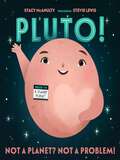
Pluto!: Not a planet? not a problem! (Our Universe)
By Stacy McAnulty. 2023
This program features narration from the author. Hot diggity dog! Meet Pluto! The runt of a litter of eight planets.…
Pluto may not be the biggest or fastest planet to revolve around the Sun, but it has a unique story to tell. From the tale of how it was found by humans to its naming as a dwarf planet, it's Pluto's turn to take the spotlight and properly re-introduce itself. With characteristic humor and charm, Stacy McAnulty channels the voice of Pluto in this next celestial "autobiography" in the Our Universe series. Rich with kid-friendly facts, this is an equally charming and irresistible companion to Earth! My First 4.54 Billion Years and Sun! One in a Billion . A Macmillan Audio production from Henry Holt & Company
Searching Beyond the Stars: Seven Women in Science Take On Space's Biggest Questions
By Nicole Mortillaro. 2022
Are we alone in the cosmos? Could we one day live on a different planet? How is life formed? What…
other secrets does the universe hold? Through profiles of seven remarkable women scientists and their achievements in their respective fields, Searching Beyond the Stars takes us deep into space, looking at once to the distant past and the distant future to capture the awe and intrigue of some of the biggest questions we can possibly ask.Making connections across astronomy, chemistry, physics, history, and more, Nicole Mortillaro draws on her own experience as a woman in STEM to highlight the incredible odds each scientist faces while chasing new discoveries and the ways in which sexism and racism, among other barriers, still affect women scientists to this day. Sidebars filled with fascinating facts take readers behind the science and encourage them to delve deeper. Vibrant illustrations by Amanda Key showcase the wonder of space and the passion and eternal curiosity that drive each scientist in their work unfurling the mysteries of our universe.Scientists ProfiledKatherine Johnson, research mathematician and aerospace technologist at NASA. Helped get the first American astronauts into space and safely home again. Lived in Newport News, Virgina.Jill Tarter, radio astronomer and project scientist at NASA. Opened up possibilities for communicating with aliens. Lives in Berkeley, California.Sara Seager, astrophysicist and planetary scientist. Credited with laying the foundation for the field of exoplanet atmospheres and the search for life on exoplanets. Originally from Toronto, Ontario, Sara now lives in Massachusetts.Emily Lakdawalla, planetary scientist, journalist, speaker, and expert science communicator formerly of The Planetary Society. Lives in Los Angeles, California.Tanya Harrison, planetary scientist and geologist. Was on the science operations team for NASA’s Mars Reconnaissance Orbiter analyzing imaging from a geologist’s standpoint to see whether we might one day live on Mars. Director of Science Strategy at Planet Labs. Lives in Washington, D.C.Renée Hložek, astrophysicist and cosmologist. Her work is to imagine, dream, and calculate the mathematical equations that govern and predict the end of the universe. Originally from South Africa, Renée now lives in Toronto, Ontario.Ashley Walker, astrochemist, science communicator, and activist. Co-organizer of #BlackinChem, #BlackInAstro, and #BlackInPhysics to highlight and amplify the voices of Black researchers and scholars in these fields. Lives in Chicago, Illinois.*A Junior Library Guild Gold Standard Selection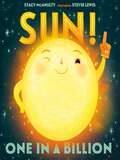
Sun! One in a billion (Our Universe #2)
By Stacy McAnulty. 2021
From the author of Earth! My First 4.54 Billion Years comes a new audiobook about space—this time starring our Sun!…
Meet Sun: He's a star! And not just any star—he's one in a billion. He lights up our solar system and makes life possible. With characteristic humor and charm, Stacy McAnulty channels the voice of Sun in this next celestial "autobiography." Rich with kid-friendly facts, Sun! One in a Billion is an equally charming and irresistible companion to Earth! My First 4.54 Billion Years. A Macmillan Audio production from Henry Holt and Company.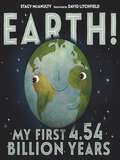
Earth! My first 4.54 billion years (Our Universe #1)
By Stacy McAnulty. 2021
Earth! My First 4.54 Billion Years is a lighthearted nonfiction audiobook about the formation and history of the world—told from…
the perspective of the Earth itself! "Hi, I'm Earth! But you can call me Planet Awesome ." Prepare to learn all about Earth from the point-of-view of Earth herself! In this funny yet informative book, filled to the brim with kid-friendly facts, listeners will discover key moments in Earth's life, from her childhood more than four billion years ago all the way up to present day. Beloved children's book author Stacy McAnulty helps Earth tell her story. The audiobook includes back matter with even more interesting tidbits. This title has Common Core connections. A Macmillan Audio production from Henry Holt and Company.
Counting the stars: The Story of Katherine Johnson, NASA Mathematician
By Lesa Cline-Ransome, Raúl Ón. 2019
Before John Glenn orbited the Earth or astronauts walked on the moon, a group of dedicated female mathematicians known as…
"human computers" used their knowledge, pencils, adding machines, and writing paper to calculate the orbital mechanics needed to launch spacecraft. Katherine Johnson was one of these mathematicians who used trajectories and complex equations to chart the space program. Even as Virginia's Jim Crow laws were in place in the early 1950s, Katherine worked analyzing data at the NACA (later NASA) Langley laboratory. For grades 2-4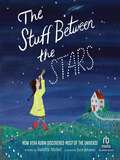
The stuff between the stars: How vera rubin discovered most of the universe
By Sandra Nickel. 2024
Before Vera Rubin discovered most of the universe, she was a girl who loved the night sky. She watched the…
Big Dipper circle the North Star. And when her eyelids grew heavy, she dreamed not about what she had seen, but about what she had not seen. She dreamed about the mysteries between the stars. As Vera grew older, she tried to uncover those mysteries. At her first conference, the male astronomers said her ideas were "outlandish." They said they were "ridiculous." Vera didn't like their harsh words, pushing her away. So she started studying faraway galaxies no one else was interested in. The youngest wheeled like pinwheels. The oldest spun with their arms closed tight. And every single one showed that between the stars, there is stuff we cannot see. Scientists before Vera had suspected this "dark matter" made up most of the universe. But no one had been able to show it was there. No one, until Vera. The Stuff Between the Stars tells Vera's incredible story, celebrates her brilliance, and shows how a girl's never-ending love for the night sky changed the way we see our universe today
Who Was Sally Ride? (Who was?)
By Megan Stine. 2013
In 1978, Sally Ride, a PhD candidate at Standford University, responded to a newspaper ad to join the US astronaut…
program. She was accepted and became the first American woman astronaut to fly in space! Among her other accomplishments, she played tennis like a professional, was an astrophysicist who helped develop a robotic arm for space shuttles, and later, through Sally Ride Science, worked to make science cool and accessible for girls. Sally Ride, who died on July 23, 2012, will continue to inspire young children.
Shining Star: Vera Rubin Discovers Dark Matter
By Suzanne Slade. 2023
Pioneering astronomer Vera Rubin discovers dark matter—the mysterious substance that makes up most of the universe—while confronting sexism, and paves…
the way for future women scientists in this engaging STEM/STEAM picture book biography.From the moment she first looked out her window at the night sky, future astronomer Vera Rubin was star-struck. Her cosmic questions about stars, galaxies, and the universe gave Vera the drive to build her own telescope and earn multiple degrees in astronomy, despite an army of naysayers who thought women shouldn&’t reach for the stars.But Vera did reach for the stars. Studying spiral galaxies, she searched the skies all through the night, using telescopes in unheated observatories, some of which barred women until Vera insisted they let her in. And her studies revealed something stellar: evidence for the existence of dark matter, the most mysterious substance in the universe.Today, scientists continue to build off of Vera&’s groundbreaking work as they strive to better understand dark matter. A trailblazing scientist, Vera Rubin changed people&’s understanding of both the universe and what a woman can do.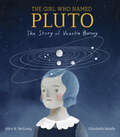
The Girl Who Named Pluto: The Story of Venetia Burney
By Alice B. McGinty. 2019
An empowering, inspiring--and accessible!--nonfiction picture book about the eleven-year-old girl who actually named the newly discovered Pluto in 1930.When Venetia…
Burney's grandfather reads aloud from the newspaper about a new discovery--a "ninth major planet" that has yet to be named--her eleven-year-old mind starts whirring. She is studying the planets in school and loves Roman mythology. "It might be called Pluto," she says, thinking of the dark underworld. Grandfather loves the idea and contacts his friend at London's Royal Astronomical Society, who writes to scientists at the Lowell Observatory in Massachusetts, where Pluto was discovered. After a vote, the scientists agree unanimously: Pluto is the perfect name for the dark, cold planet. Here is a picture book perfect for STEM units and for all children--particularly girls--who have ever dreamed of becoming a scientist.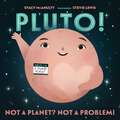
Pluto!: Not a Planet? Not a Problem! (Our Universe)
By Stacy McAnulty. 2023
Hot diggity dog! Meet Pluto! The runt of a litter of eight planets. Pluto may not be the biggest or…
fastest planet to revolve around the Sun, but it has a unique story to tell. From the tale of how it was found by humans to its naming as a dwarf planet, it’s Pluto’s turn to take the spotlight and properly re-introduce itself.With characteristic humor and charm, Stacy McAnulty channels the voice of Pluto in this next celestial "autobiography" in the Our Universe series. Rich with kid-friendly facts and beautifully brought to life by Stevie Lewis, this is an equally charming and irresistible companion to Earth! My First 4.54 Billion Years and Sun! One in a Billion.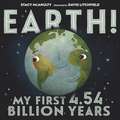
Earth! My First 4.54 Billion Years (Our Universe #1)
By Stacy McAnulty. 2017
A lighthearted nonfiction picture book about the formation and history of the Earth--told from the perspective of the Earth itself!"Hi,…
I’m Earth! But you can call me Planet Awesome." Prepare to learn all about Earth from the point-of-view of Earth herself! In this funny yet informative book, filled to the brim with kid-friendly facts, readers will discover key moments in Earth’s life, from her childhood more than four billion years ago all the way up to present day. Beloved children's book author Stacy McAnulty helps Earth tell her story, and award-winning illustrator David Litchfield brings the words to life. The book includes back matter with even more interesting tidbits.This title has Common Core connections.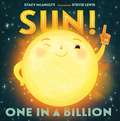
Sun! One in a Billion (Our Universe #2)
By Stacy McAnulty. 2018
From the author of Earth! My First 4.54 Billion Years comes a new picture book about space—this time starring our…
Sun!Meet Sun: He's a star! And not just any star—he's one in a billion. He lights up our solar system and makes life possible. With characteristic humor and charm, Stacy McAnulty channels the voice of Sun in this next celestial "autobiography." Rich with kid-friendly facts and beautifully illustrated, Sun! One in a Billion is an equally charming and irresistible companion to Earth! My First 4.54 Billion Years.